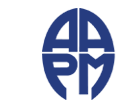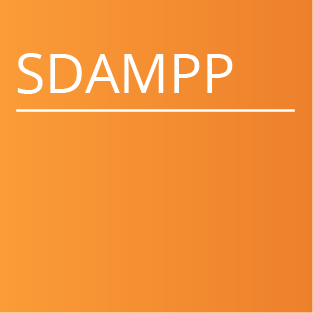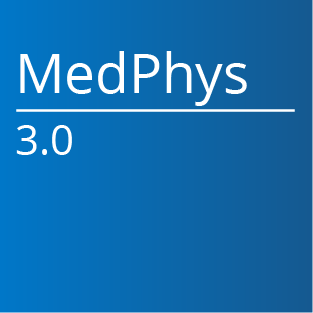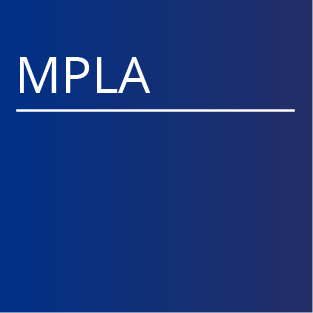 Radiological Society of North America (RSNA)
Radiological Society of North America (RSNA)
and the
American Association of Physicists in Medicine (AAPM) 
REQUEST FOR PROPOSALS to produce WEB-BASED INSTRUCTIONAL MODULES
January 2010
Proposals are solicited for the development of educational content for web-based instructional modules intended primarily for the education of resident radiologists in the basic science underlying medical imaging. Topics for which proposals are solicited are shown below. A proposal on a specific topic should reflect the AAPM physics resident education curriculum. Each proposal should specify a lead physicist, a collaborating radiologist and a radiology resident working on the module development team. To the extent possible, the material should use images to illustrate basic science concepts. The information in a module should not require more than 45 minutes to assimilate, not including the 20-25 post test questions presented at the end of the module. Responders to the Request for Proposals should plan to develop the educational content for web-based educational modules. Formatting of the content into a web-based module will be done by expert staff at the RSNA.
The physics module production has been broken into two phases. Phase I is nearing completion; the joint effort of the RSNA and the AAPM has generated 30 comprehensive physics modules in Phase I. In Phase 2, modules addressing the themes of Basic Science and Radiation Protection will be solicited. Copyright of modules will be held jointly by the RSNA and the AAPM, but developers will be free to use the material in their teaching programs.
Development of the educational content for web-based instructional modules is an opportunity for a team of physicists and radiologists to contribute in a major way to the education of resident physicians. It also provides the developers with recognition of their technical and educational expertise. They will be identified as authors of the module.
The content for each module will be peer-reviewed, and two revisions in the content will likely be required before its final acceptance.
Modules will be available at no charge to residents and to RSNA and AAPM members on the RSNA website, with a direct link from the AAPM website. Proposals for module development should be sent by close of business on February 28, 2010 to Ms. Kimberley Jacques at the Radiological Society of North America. A response to module proposals will be provided by April 1, 2010. Up to 3 module proposals may be submitted by a group of potential authors.
Proposals should include the following components:
- Title
- One Page Summary of Content
- Outline of Module Content
- List of Contributing Authors’ Names
- Learning Objectives
Three months are allocated for development of the educational content of a web-based instructional module from the date of notification that a proposal has been accepted. An additional 4 months is allocated for review and revision(s) of a module. That is, a total of 7 months is allocated for the production, review and final acceptance of an instructional module. If this time frame is met, the developers’ team will be paid $3,000 plus a bonus of $1,000. If a finished module is not delivered in this time frame, an extension of 3 months will be provided, but the bonus of $1,000 will not be paid. If a finished module is not delivered in 10 months, the commitment for a module will be terminated and no payment will be made. Rapid peer review of the educational content for modules is envisioned, so the deadlines will not be handicapped by the peer-review process. Progress reports will be needed periodically over the period of module production. Two years after completion of a module, updating of the module will be required, for an additional remuneration of $1,000.
To provide guidance on what a finished module may look like, you may find sample modules available in the RSNA Learning Management System. To access these modules, please visit http://physics.rsna.org. You will be asked for a username and password. Please use Physics_RFP as the username, and physics as the password. Please note this login information is case-sensitive.
Once logged in, you will find the completed physics modules from Phase I modules available for viewing. Click on the title of the module in which you are interested, and navigate though the module using the on-screen navigation tools. If you experience any difficulty accessing these modules, please contact us at physics@rsna.org, or call 1-800-272-2920.
Appendix I
Physics Module Topics for Phase II
There are 16 identified AAPM curriculum topics to be developed into modules in Phase II. These are grouped into seven major categories. Some communication and collaboration among authors working on modules within a category may be requested to ensure that the content is fully covered but not duplicated.
Fundamentals
- Atoms, Radiation, and Radioactivity
- Interactions of Radiation and Tissue
- Radiation Measurements and Units
X-Ray Production
- X-Ray Tubes and Spectra
Basic Imaging Science and Technology
- Image Contrast and Noise
- Image Spatial and Temporal Detail
- Image Processing and Reconstruction
- Image Perception and Performance Evaluation including CAD
- Image Display and PACS
- Image Statistics
Radiation Protection
- Fundamentals of Radiation Protection
Projection X-Ray Imaging
- Digital X-Ray Imaging
Computed Tomography
- CT in Pediatrics (Image Gently)
Ultrasound
- Interactions of Ultrasound in Tissue
Magnetic Resonance
- MRI: Image Artifacts
- MRI: Concepts and Tissue Properties
Appendix II
-
Responding to the RFP
- Summary of Content
To submit a response for the RSNA/AAPM physics modules, a one page summary of content to be covered is required. Include the title of the topic in the summary you are submitting.
- Outline Submission Creation
In addition to the Summary of Content, an outline of the content to be covered in this module must also be submitted. The accepted form of the physics module outlines should follow the format of the example below, including roman numerals for each section heading, capital alphabetic lettering for each subtopic under the heading and numerical numbering under each subtopic if necessary. Your outline should clearly detail the proposed sections of the topic being addressed in your module. Outlines should have no more than 3 sub-headings.
EXAMPLE OUTLINE:- Course Information
- Learning Objectives
- Contributing Authors
- Radiation Effects
- (Deterministic) Non-Stochastic Effects
- Cataracts
- Radiation Effects to the Reproductive Organs
- Acute Radiation Sickness
- Hematopoietic Syndrome
- Gastrointestinal Syndrome
- Neurovascular Syndrome
Please be specific and cover all relevant topics under the module in which you are working. Use the outline format to ensure all appropriate topics will be covered in your module.
- Course Information
- Contributing Author Information
All contributing authors must be listed in your proposal response. When providing author information for your team, please include the individual’s full name, credentials, and departmental and institutional affiliations. For example:
Bob R. Smith, MD, PhD
Department of Radiology
University of California Los Angeles
- Learning Objectives
Each module should identify 3-5 learning objectives for users. Learning objectives may be written from several perspectives. The three most common are:- Learner: what the student/participant will know as a result of attending the activity
- Instructional: what the instructor/faculty will teach or convey during the activity
- Behavioral: what the learner will be able to do differently by attending the activity
*INFORMATION
Count
Define
Identity
List*APPLICATION
Apply
Complete
Develop
Examine*SYNTHESIS
Arrange
Assemble
Detect
Specify*COMPREHENSION
Classify
Compare
Describe
Explain*ANALYSIS
Appraise
Contrast
Debate
Differentiate*EVALUATION
Assess
Critique
Estimate
Recommend
Introduce all learning objectives with the following phrase, then the bulleted specifics. For example:
After completing this module, participants will be able to:- Develop a procedure to minimize the risk of deterministic effects to a patient.
- Apply the most appropriate radiological exam for a pregnant patient.
- Summary of Content



















